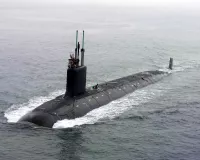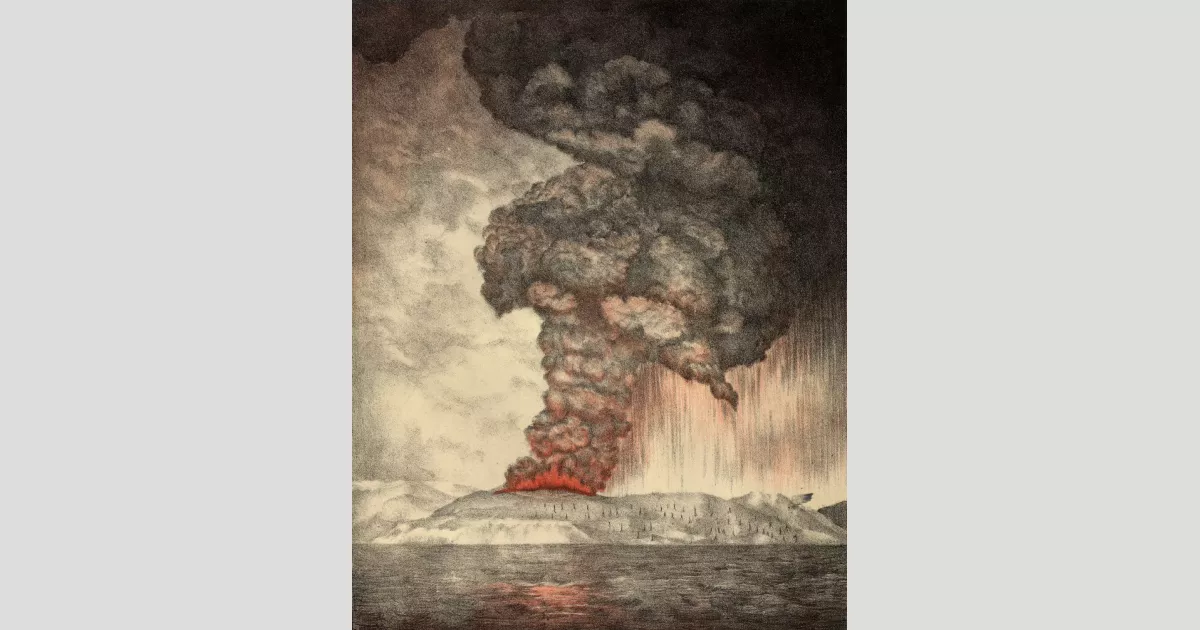Krakatoa, or Krakatau, is a caldera located in Indonesia's Sunda Strait. Situated between Java and Sumatra, it forms a volcanic island group. The group includes four islands: Lang, Verlaten, Rakata, and the caldera itself. Rakata stands as the sole remnant of an island largely decimated by a catastrophic eruption in 1883, the event that birthed the existing caldera.
1914: Proposal for Nature Preserve
Plans were initiated in 1914 to designate Rakata as a nature preserve.
1916: Pumice Mining and Rat Introduction
Johann Handl acquired a permit for pumice mining on Rakata in 1916, amidst local opposition. His activities are thought to have introduced black rats to the island.
1921: Krakatoa Declared Nature Reserve
Krakatoa was officially declared a nature reserve in 1921.
June 1927: Early Submarine Activity
Early signs of submarine volcanic activity were reported in June 1927 in the same area where a new island would later emerge.
December 1927: Submarine Eruptions and New Island
Submarine eruptions were observed near Krakatoa in December 1927. A new island emerged from these eruptions, though it was short-lived due to erosion.
1927: Formation of Anak Krakatoa
Eruptions starting in 1927 created a new island, Anak Krakatau, in the same location as the original Krakatoa.
August 1930: Anak Krakatau Breaks Water
The fourth island to emerge after the 1883 eruption, Anak Krakatau, broke the water's surface in August 1930. It began producing lava flows, leading to its more permanent formation.
1947: The Twenty-One Balloons
The 1947 children's novel "The Twenty-One Balloons" by William Pene du Bois features Krakatoa and its 1883 eruption as a central part of the story.
1953: Fair Wind to Java
The 1953 film "Fair Wind to Java" uses Krakatoa as a key setting. The story involves a race to retrieve diamonds hidden on the volcano before its eruption.
1961: One Step Beyond: "Eye Witness"
The anthology series "One Step Beyond" concluded in 1961 with the episode "Eye Witness," which dramatized the story of the Krakatoa eruption being reported before news could have realistically reached the source.
1966: The Time Tunnel: "Crack of Doom"
The island of Krakatoa served as a prominent setting in the 1966 episode "Crack of Doom" from the Irwin Allen television series "The Time Tunnel."
1969: Krakatoa, East of Java
The 1969 film "Krakatoa, East of Java" (later retitled "Volcano") features a plot revolving around a salvage operation near Krakatoa during its eruption.
1973: Styx: "Krakatoa"
The American progressive rock band Styx released a spoken-word track titled "Krakatoa" on their 1973 album "The Serpent Is Rising." The song narrates the story of the volcano's eruption and the subsequent return of life.
1977: Krakatau (1977)
The Indonesian martial arts film "Krakatau" released in 1977, starring Dicky Zulkarnaen and Advent Bangun, used Krakatoa as the setting for its story.
1980: Proposal for National Park
Krakatoa, along with other reserves, was proposed as a national park in 1980.
1985: Saxon's Initial Release of "Krakatoa"
The song "Krakatoa" by Saxon, focusing on the 1883 eruption, was initially released on their 1985 album "Innocence Is No Excuse."
1991: UNESCO World Heritage Site
In 1991, Ujung Kulon National Park and Krakatau Nature Reserve earned recognition as a UNESCO World Heritage Site.
1992: Establishment of National Park
Ujung Kulon National Park, encompassing Krakatoa, was formally established in 1992.
2003: Simon Winchester's Theory
In 2003, Simon Winchester proposed that a 1680 eruption of Krakatoa was depicted in a painting by Jan van Schley called "The Burning Island".
2006: Krakatoa: Volcano of Destruction
In 2006, a television drama titled "Krakatoa: Volcano of Destruction" focused on the Krakatoa eruption.
2008: Krakatoa (2008)
Another television production, simply titled "Krakatoa," featured Krakatoa as its subject in 2008.
2009: Anak Krakatoa Eruptions
Anak Krakatau exhibited eruptions in 2009, marking a period of volcanic activity.
2010: Anak Krakatoa Eruptions
Anak Krakatau continued its eruptive activity in 2010.
2010: Saxon: "Krakatoa"
The British heavy metal band Saxon released a song about the 1883 eruption of Krakatoa on the 2010 re-release of their album "Innocence Is No Excuse."
2011: Anak Krakatoa Eruptions
Anak Krakatau experienced eruptions in 2011, adding to its growth.
2012: Anak Krakatoa Eruptions
Eruptions continued at Anak Krakatau in 2012.
2017: Anak Krakatoa's Height
By 2017, Anak Krakatau had grown to a height exceeding 400 meters above sea level.
December 2018: Anak Krakatoa Collapse
Anak Krakatoa experienced a major collapse in December 2018, reducing its height significantly.
Mentioned in this timeline

A submarine is a watercraft capable of independent operation underwater...

News encompasses information about current events disseminated through various media...

Advent is a Christian season of preparation and anticipation for...
A national park is a protected area designated by a...
Trending

16 days ago Amon-Ra St. Brown's Status Uncertain for Lions vs. Cowboys Game Due to Injury.

18 days ago Marco Rubio's Venezuela Stance: War Sales Pitch and Social Media Influence Examined
5 months ago Trump's Tariff Easing on Serbia: Aims for Trade Deal with President Vucic
1 month ago Yankees Re-Sign Ryan Yarbrough to One-Year Deal: Bolstering Left-Handed Pitching
5 months ago Senator concerned JetBlue and United partnership may negatively affect market competition.

9 months ago Ian McKellen Returns to Marvel Universe in 'Avengers: Doomsday' as Magneto.
Popular

Candace Owens is an American conservative political commentator and author...

Tucker Carlson is an American conservative political commentator known for...

XXXTentacion born Jahseh Dwayne Ricardo Onfroy was a controversial yet...

Kashyap Pramod Patel is an American lawyer who became the...

Ilhan Omar is an American politician currently serving as the...

Bill Gates an American businessman and philanthropist revolutionized personal computing...
